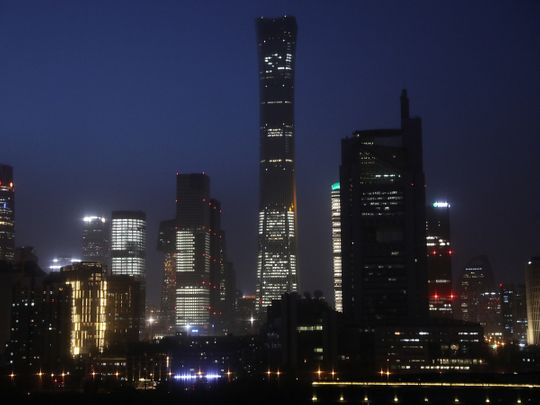
US president Bill Clinton, on the eve of his visit to the subcontinent in March 2000, called the Line of Control (LOC) that divides the state of Jammu and Kashmir between Pakistan and India “the most dangerous place in the world”. The LOC, notwithstanding the recent ceasefire, remains in perpetual state of conflict. Barely making news it has the potential of a major conflagration between the two nuclear armed states. With the Chinese and the US positions known, the South Asian region poses a bigger risk of a military conflict between China and the US through their allies.
On way to becoming the world’s leading economy, China is naturally driven by aspirations of international leadership. While the American military deployment in the western Pacific is a constraint, a resurgent China needs assured energy supplies and passage for its produce into the Indian Ocean and beyond without being bottled in by the Malacca Strait between Malaysia and Singapore.
The U.S. has its own complex relationship with Pakistan, and would be happy to see Pakistan distance itself from America’s global adversary. Ofcourse, Pakistan cannot oblige, hoping to retain China’s favor against their mutual foe in India. Atop all this, the U.S. wants India positioned as a key regional player to contain the rising China’s influence.
Moving beyond the military relations, China’s heavy investment in Pakistan through the China-Pakistan Economic Corridor (CPEC) under the ambitious Belt and Road Initiative (BRI) the relations between the two countries have reached a new peak.
Both the US and India are wary of China’s economic reach. Pakistan is China’s principal strategic partner in the larger Asian region, providing China secure access to the Indian Ocean and ability to project power countering and thus challenging American presence in the Indian Ocean. In fact, more than half of China falls below the northern most latitudinal point of South Asia, making it geographically a South Asian state.
Today, the interests of both China and the US are colliding in the South Asia region. And as the US continues to throw its support behind neighbouring India, Pakistan grows more and more dependent upon China who both find a common adversary in India. China-Pakistan relations are thus pivotal for each other.
The Indo-US strategic partnership beginning with the nuclear deal under President George Bush Jr. was followed by four foundation military agreements. Denying India, the membership of Nuclear Suppliers Group (NSG) China has so far thwarted India from drawing full benefits of the NSG. Defence Secretary Lloyd Austin’s visit to India so early in President Biden’s term sends a clear message on their military partnership.
The US support for a permanent membership for India at the UN Security Council is also hanging fire in the wake of rivalries centred in South Asia.
US leaders from both parties have often expressed their desire for India to play a larger role in South Asian and Indian Ocean security. With India, Australia and Japan on its side, the US could encircle China on the sea. Giving attention early in the term on India, the Biden administration has demonstrated where its foreign policy priorities lie. This will necessarily compel Pakistan, whose leader is still awaiting the customary phone call from the new American president, and China to draw closer to protect their security interests.
The interests of the two super powers — China and the US collide in this region that sits beside some of the world’s biggest energy reservoirs in the Middle East and Central Asia. This growing conflict will ultimately be won through spheres of influence and economic partnerships, rather than the military power struggle that occurred between the Soviets and the United States.
In the face of this emerging new ‘cold war’ the future of regional peace does not hold much promise. A weakening America fuelling fear will continue to incite nations to join in partnership to deny other powers the advantages of economic ambitions. In such a state, a rising China will push back both directly and in association with Pakistan and others wherever it can.
A hot region, short of a boil, suits America to extend its overreaching foreign policy. It is time for Asian countries to introspect and work together to claim the Asian century and beyond.
Sajjad Ashraf served as an adjunct professor at the Lee Kuan Yew School of Public Policy, National University of Singapore from 2009 to 2017. He was a member of the Pakistan Foreign Service from 1973 to 2008 during which time he served as Pakistan’s ambassador to several countries.





